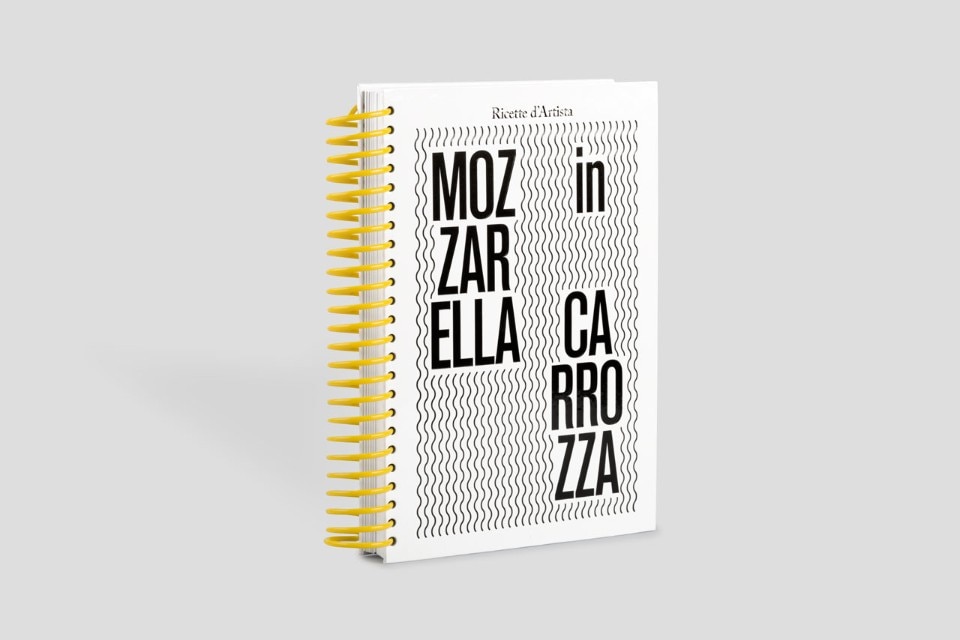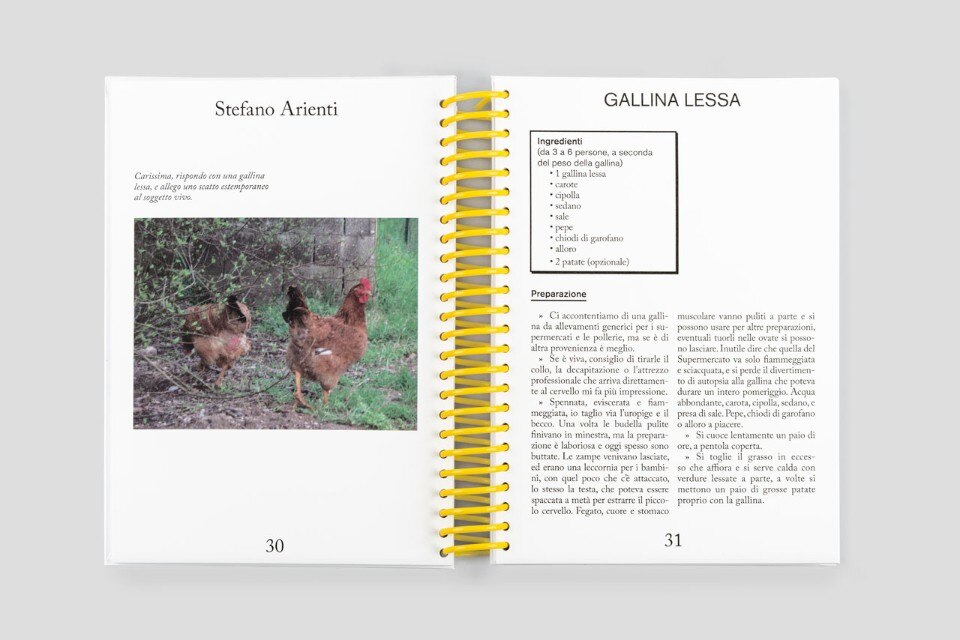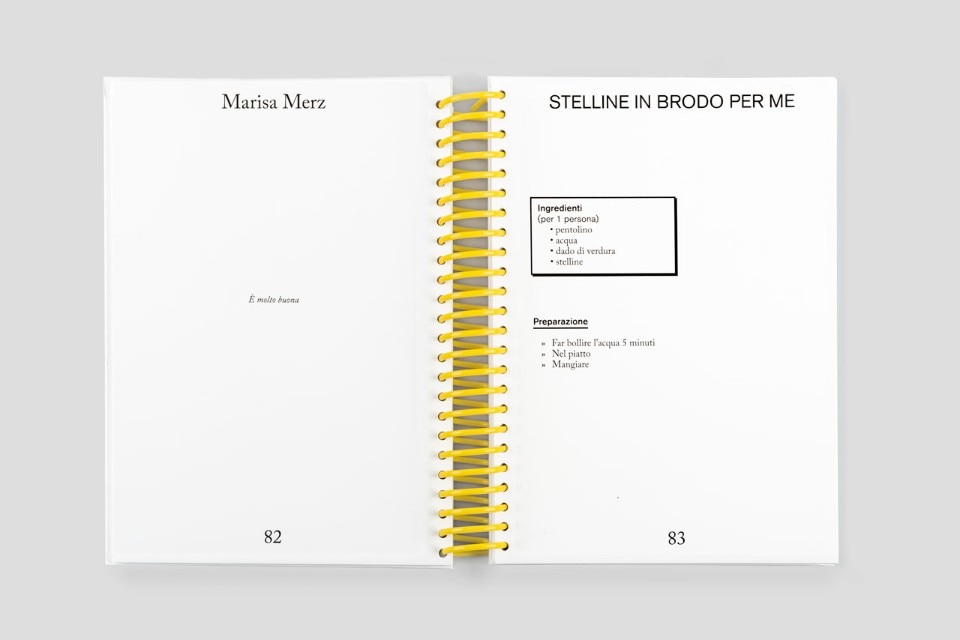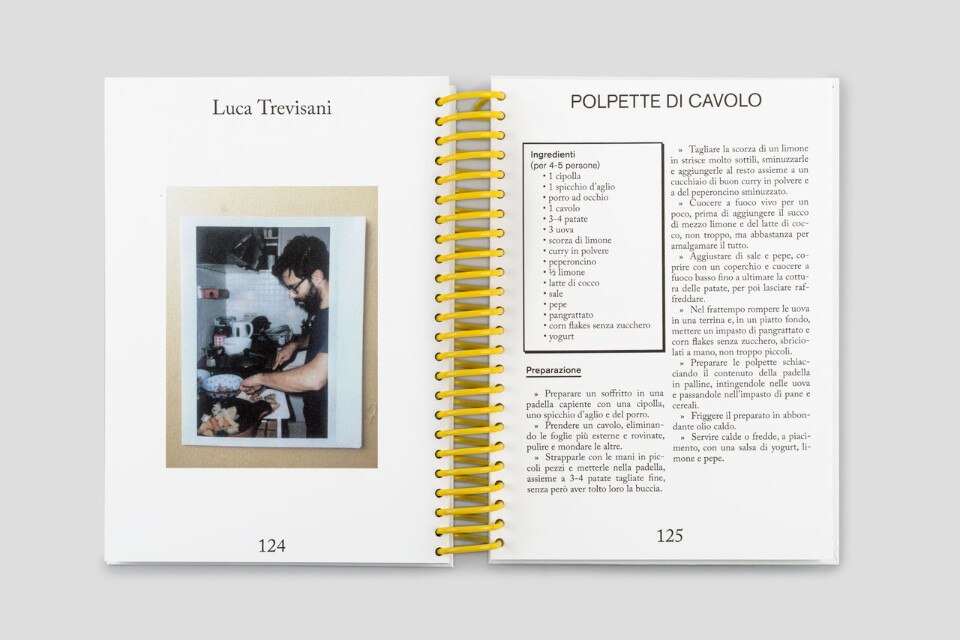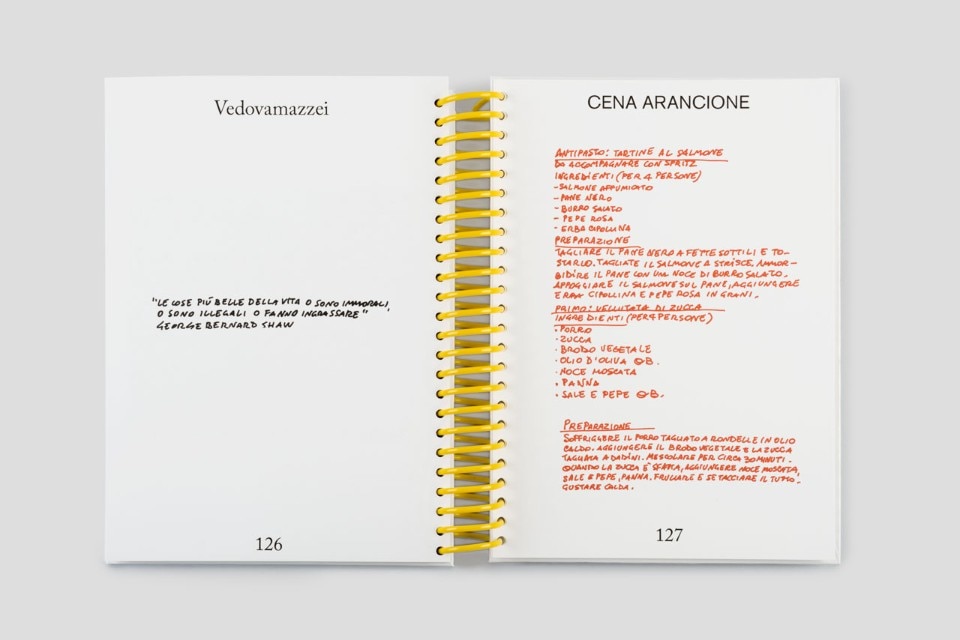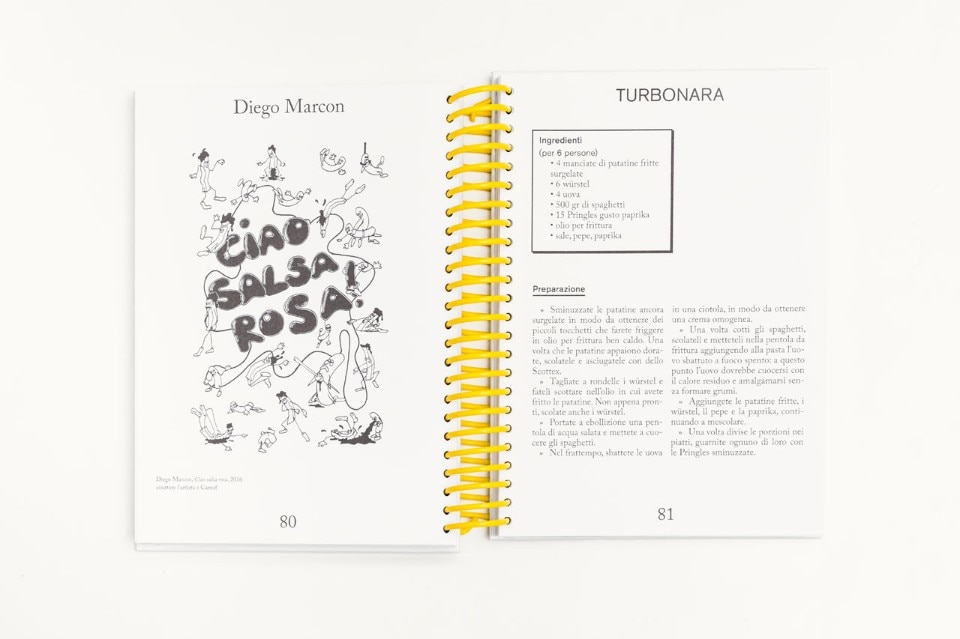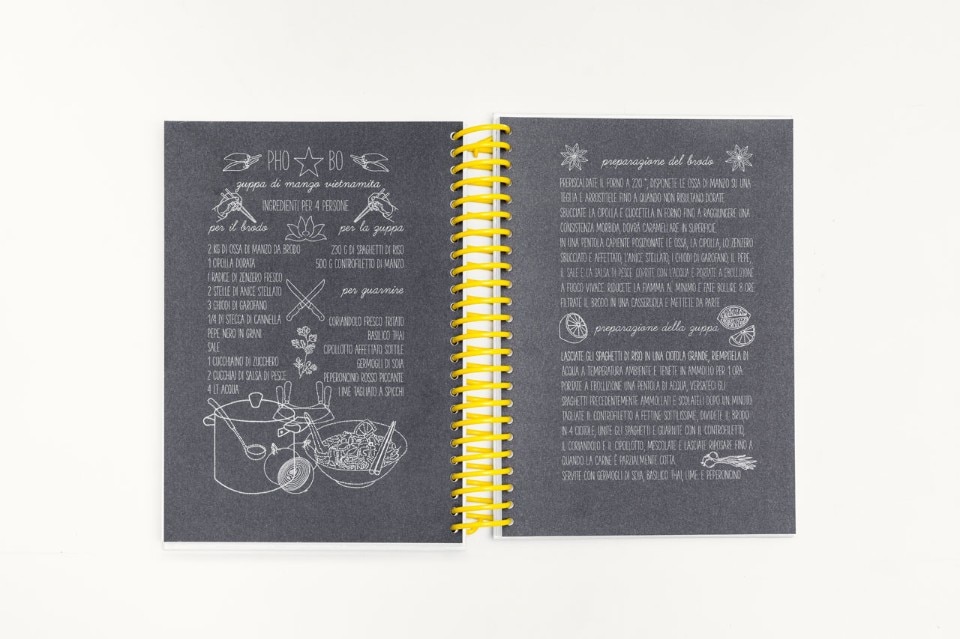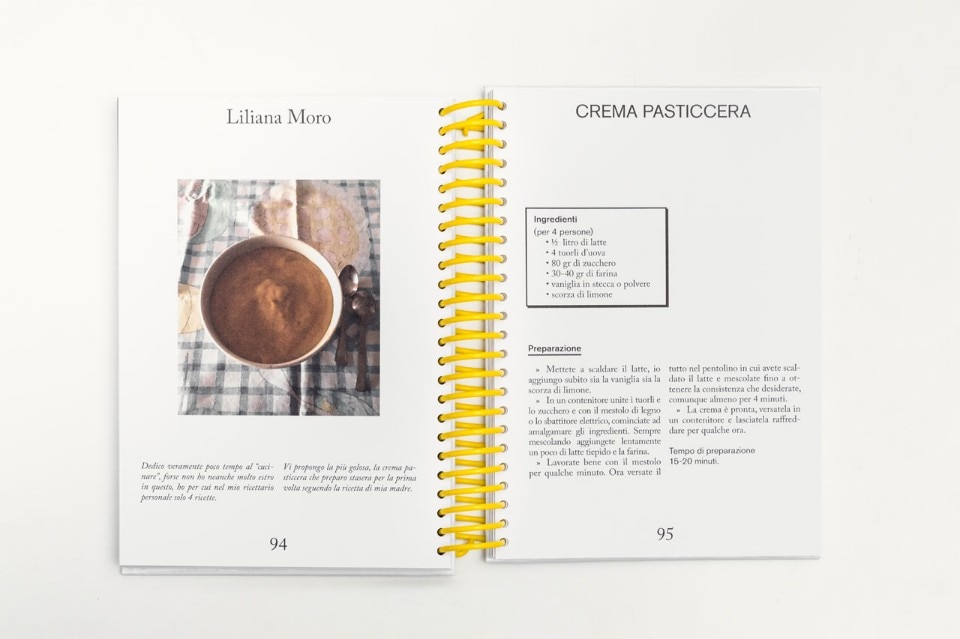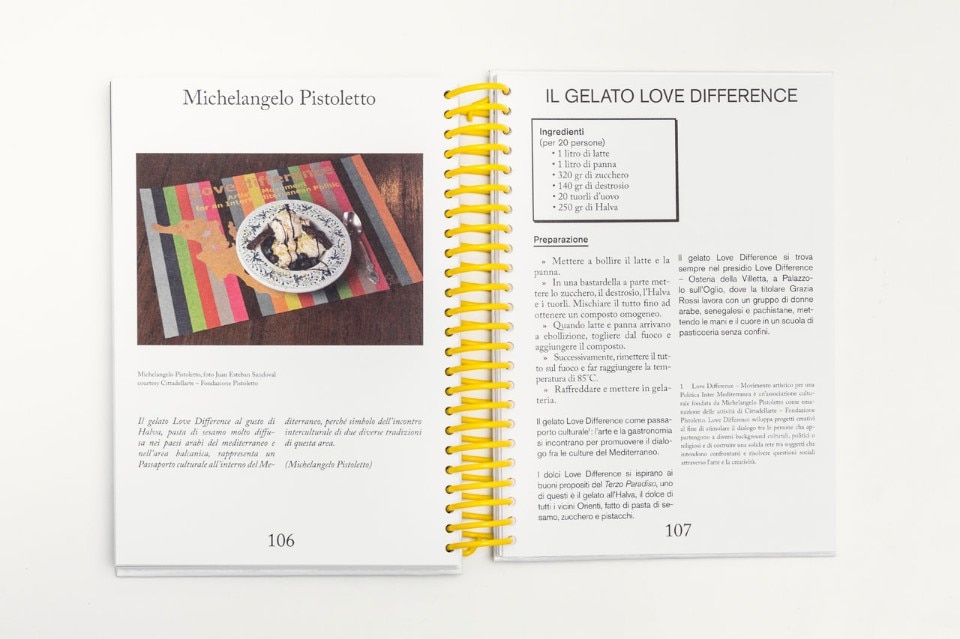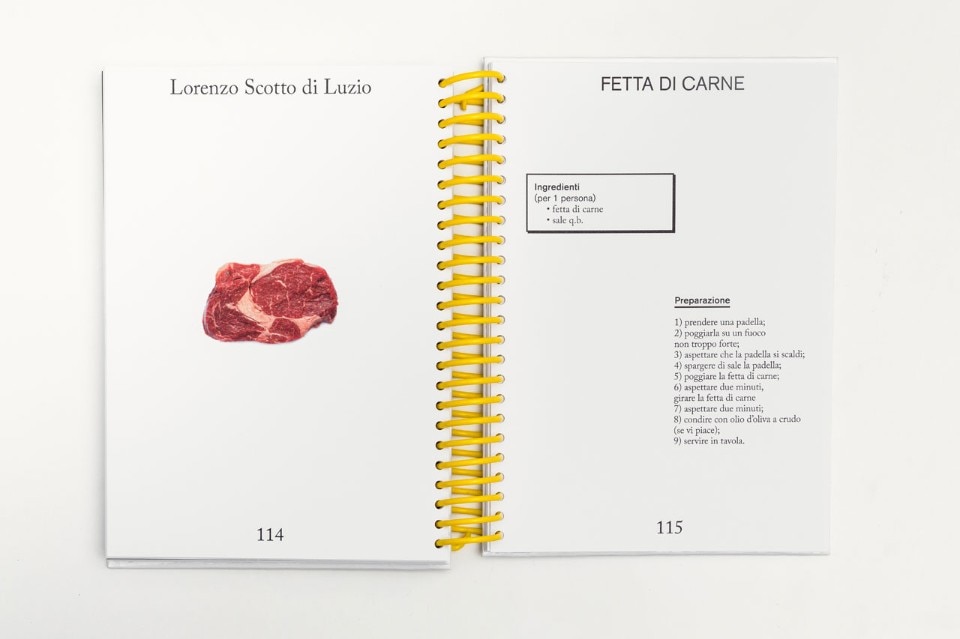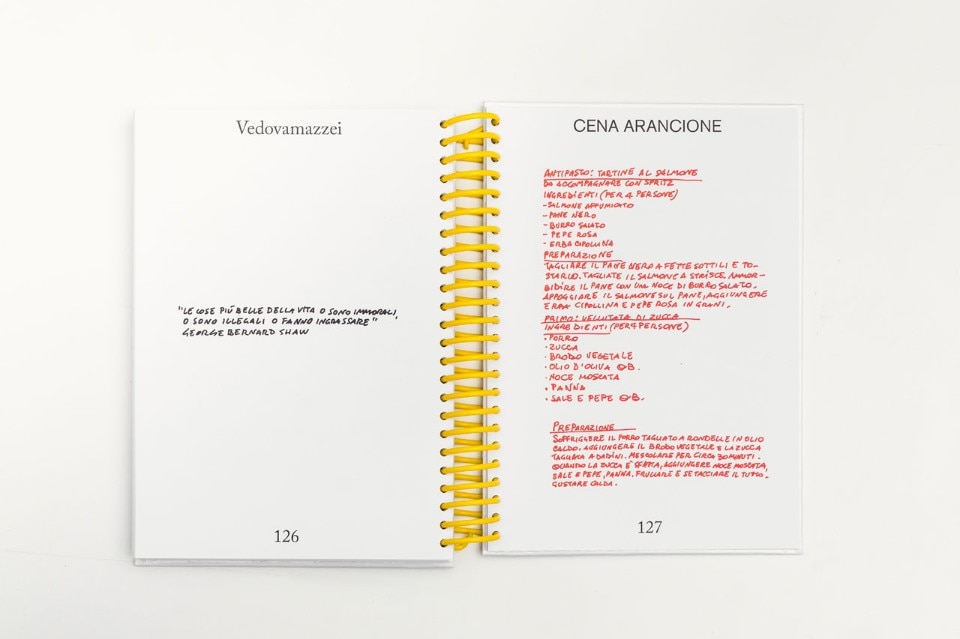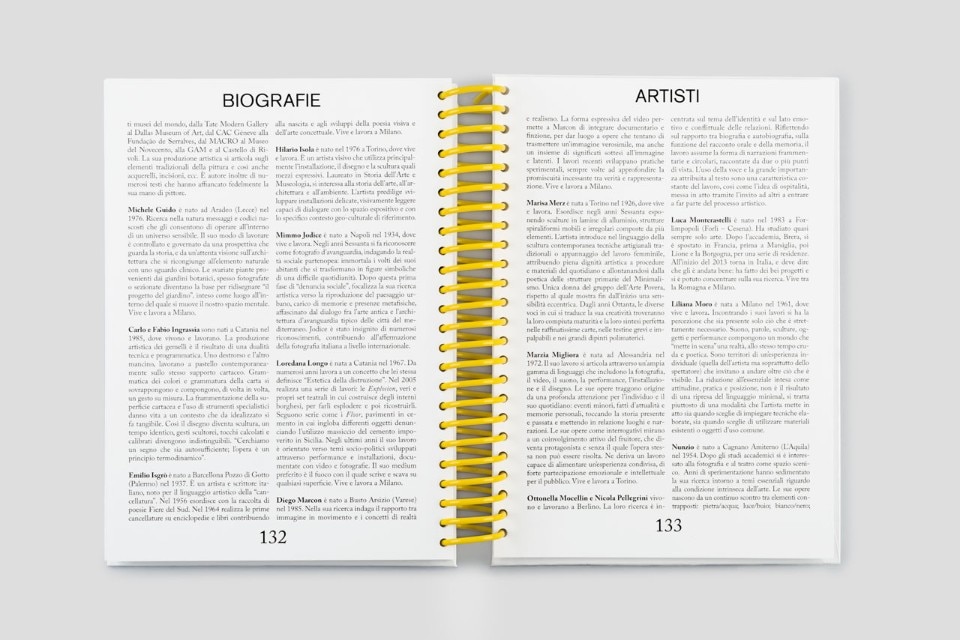In Rome they have a saying: “Have we ever eaten together, you and I?” It’s a way of keeping someone at arm’s length. Eating together is an intimate, private act, a pleasurable indulgence, one we share only with our nearest and dearest.
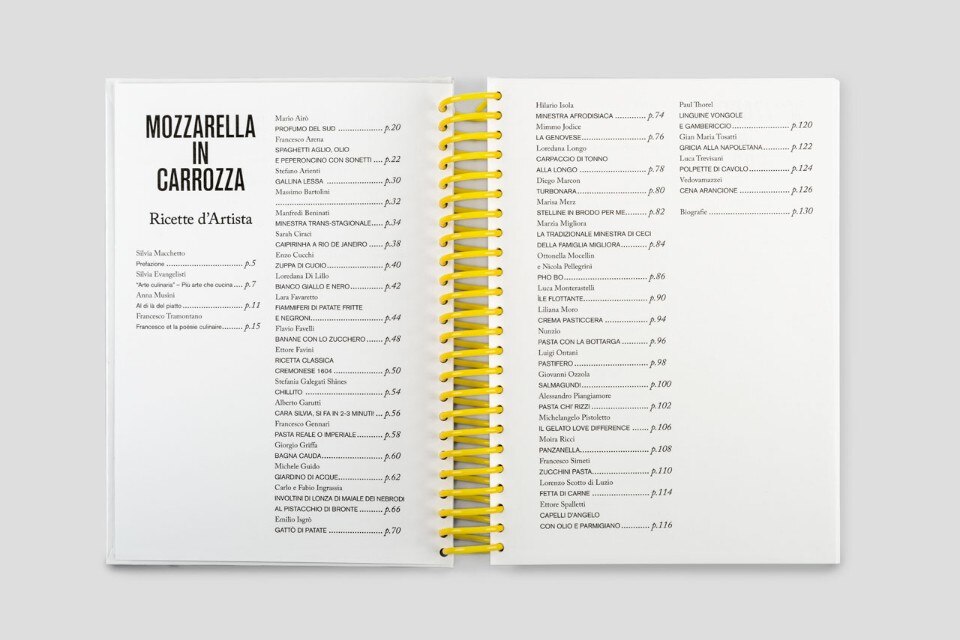
Mozzarella in carrozza (literally “mozzarella in a coach”, a traditional recipe) explores this very private sentiment, the friendship between the editor of the volume, Silvia Macchetto, and the 40 artists she invited to take their places at her great imaginary banquet. So it is no coincidence that the first course is a simple, special recipe, redolent of childhood memories, called Fragrance of the South. Spaghetti with garlic, olive oil, chili and anchovies, in Mario Airò's recipe, evokes the days when he and his brothers stayed at home alone with their father. A dish, the artist tells us, associated neither with his mother’s family nor his grandmother’s, but only his father. A culinary invention rich in all the flavour and nostalgia for the sun and searing heat of the South.
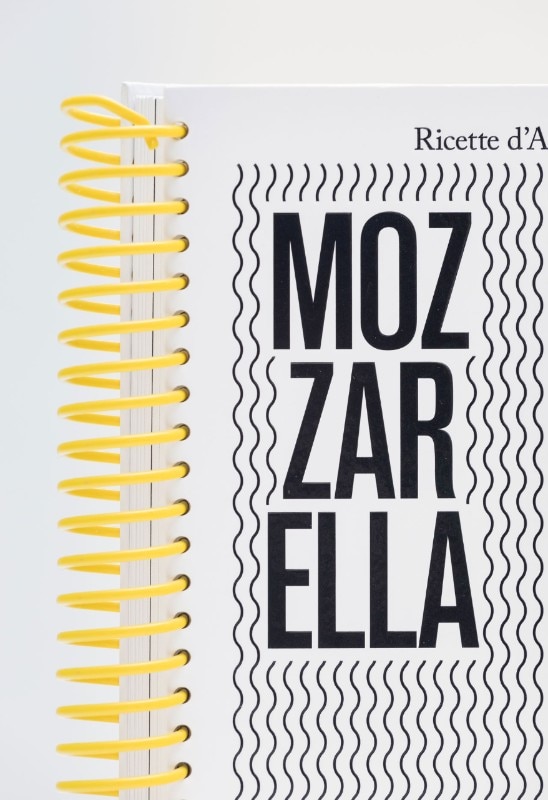
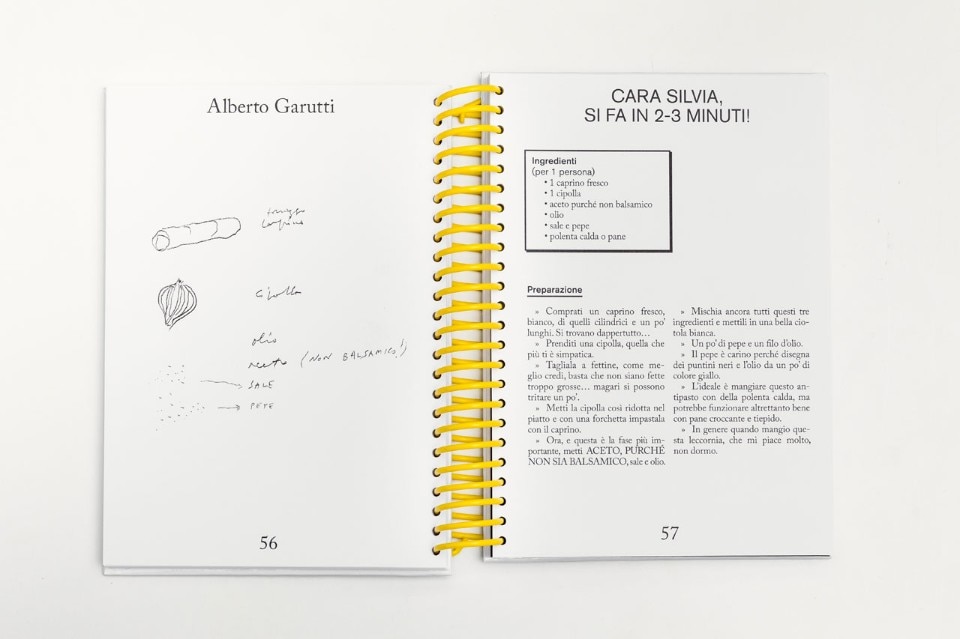
The theme of travel returns with an exquisite drink: Sarah Ciracì’s Caipirinha a Rio de Janeiro. In this recipe, memories of her exotic homeland are interwoven with an insider’s tips and insights. For example, the finest Cachaça is found at Tacacá do Norte, Rua Barão do Flamengo 35R. There they make the true Açai and you can be confident of finding a Cachaça that has come straight from the Amazonian Forest. Be sure to combine all the ingredients to a samba rhythm. After knocking it back, hurry off to dance at Vaca Atolada in the Lapa quarter.
Ottonella Mocellin and Nicola Pellegrini’s Pho Bo soup brings us the sounds of the Orient and faraway places. The crucial ingredient in this recipe is patience, timing and judgment in combining the ingredients. The broth is simmered over a gentle heat for eight hours and seasoned with all kinds of spices, including ginger, star anise, cloves, lime, Thai basil, cinnamon and chili.
When it comes to stirring appetites – and not just tickling palates – there is Hilario Isola’s Aphrodisiac Soup. The instructions end: “Eat and then have sex.”
Now we come to some minimalist dishes. Lorenzo Scotto di Luzio serves us a Meat Slice and Marisa Merz a bowl of Little-star pasta in broth for me. The success of Nunzio’s Pasta with bottarga depends not just on correctly dosing the ingredients but, as if in a race, on rapid execution.
The provocateurs are headed by Enzo Cucchi with his Leather Soup: its only ingredients are 6.5 litres of water and 2 leather uppers of old shoes. The recipe for Ontani's Pastifero is a picture of the artist wearing nothing but pasta and supporting a single piece of glittering macaroni on a pike, as in a royal coat of arms. This is followed by Vedova Mazzei’s Orange Dinner, where every ingredient, from appetizer to dessert, is strictly monochrome, including the menu written in thick-tipped felt pen. Then the recipe for Stefano Arienti’s little Boiled Chicken comes with a photo of the hen alive and scratching in the barnyard. It suggests spending an afternoon conducting an autopsy to see if the chicken is free range.
Then there are the people who think eating is essentially time-wasting. They cut the time and effort spent feeding themselves to a minimum. Liliana Moro says she has only four personal recipes. She gives us the most delicious one: crème pâtissière. Flavio Favelli gives us the recipe for Sugared Bananas, eaten at €1.50 a shot at the Trattoria Ferro di Cavallo in Palermo. There is a brown sugar recipe, but he prefers the classic white sugar version.
To finish up, here’s a little fairy-tale. Massimo Bartolini tells the fanciful story of the artist who is too finicky to eat. Never having found any food he truly likes, he ends up starving to death.
So Mozzarella in carrozza is like an enchanted coach. It’s a new talisman of happiness enclosing a refined recipe book. Just as in Gino de Dominicis’s famous artwork, alluded to in the book’s title, the secret lies in the freshness of ideas as well as ingredients. In the seventies’ installation, the artist from the Marche exhibited an ancient carriage that contained a real mozzarella on the seat, which had to be replaced each day.
At a time when food has become so radical chic and national-populist, the restraint, irony and elegance of this little volume is surprising. It puts us back in touch with the truly wholesome, which arises, as always, only from perfect sincerity.


